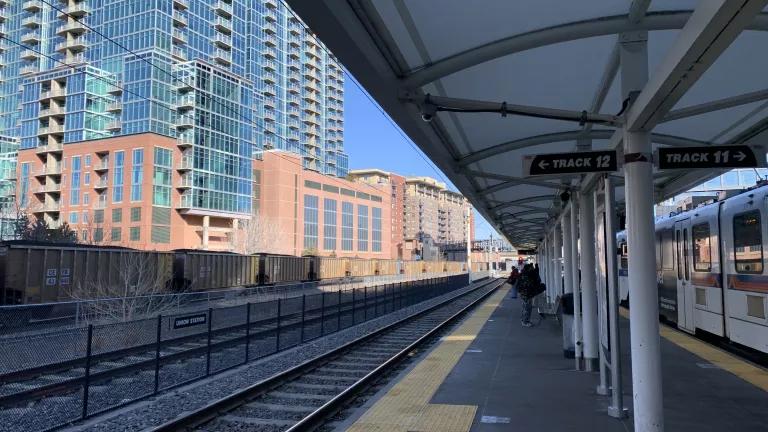An Action Plan for Transportation Equity
The actions all fall under four focus areas: wealth creation, power of community, interventions, and expanding access.

Saint Paul, MN Rondo Neighborhood, Interstate 94 in 1967
On President Biden’s first day in office, he signed Executive Order 13985: Advancing Racial Equity and Support for Underserved Communities Through the Federal Government, which directs federal agencies to evaluate whether their policies produce racially inequitable results when implemented, and to make the necessary changes to ensure underserved communities are properly supported. To ensure these Executive Orders result in real change, over 90 agencies released Equity Action Plans (EAPs) on April 14, 2022, that, taken together, lay out more than 300 concrete strategies and commitments to “address the systemic barriers in our nation’s policies and programs that hold too many underserved communities back from prosperity, dignity, and equality.”
It’s a tall but overdue order, and the administration is to be commended for taking on such a comprehensive, whole-of-government task. (Especially when the focus on equity in some funding programs has already made some Members of Congress deeply uncomfortable.)
The U.S. Department of Transportation’s EAP highlights key actions that the DOT will undertake to expand access and opportunity to all communities while focusing on underserved, overburdened, and disadvantaged communities. The actions all fall under four focus areas: wealth creation, power of community, interventions, and expanding access.
The history of federal transportation investments is littered with bulldozed neighborhoods and a deep bias toward highway expansion leaving neighborhoods behind, but the Infrastructure Investment and Jobs Act (IIJA) is a unique opportunity to rethink federal investments, in partnership with communities, so that we are achieving climate and equity goals on the ground.
Government action plans rarely talk in such detail about its explicit history of racial discrimination, and propose specific, time-bound actions to remedy them. Yet, there are clear goals set forth in USDOT’s EAP. For instance, conducting an assessment of metropolitan planning organizations and State DOT inclusion of quantitative equity screenings and meaningful and representative public participation; launching a national equity accelerator to provide hands-on support to underserved and overburdened communities accessing USDOT funds by December 2022; and piloting a transportation cost burden measure to screen transportation projects for funding by December 2023.
There are a few highlights in this EAP that caught our attention:
- Similar to local and regional transportation and planning agencies across the country, USDOT promises to do a better job at centering community voices in transportation decision-making. While USDOT acknowledges that a “one-size-fits-all” approach is ineffective for community input, there’s also an opportunity for the agency to be creative in ways in which it can strengthen community partnerships.
- There’s a lot of focus on increasing the involvement of underrepresented and disadvantaged businesses and communities in both the contracting and grant applications. USDOT demonstrates their commitment to ensuring their contract dollars and awards are more equitably distributed through ideas such as providing technical support and developing a national equity accelerator.
- Importantly, USDOT acknowledges that “inadequate coordination of land use, housing and transportation policy and investment leads to inefficient transportation options that negatively impact social, economic and health outcomes.” We hope this means there will be greater collaboration and coordination across agencies to ensure our cities support our most over-burdened communities in developing land use policies that support housing, safe streets, and low-cost transportation options.
It's promising to see the USDOT’s stated commitments to better-integrating the expertise of and providing support for community-based organizations (CBOs) in the planning and policy process, which will be a critical component of realizing the agency’s equity aspirations. Up next, we will be looking for USDOT to identify and implement more detailed actions that support CBO participation from most-impacted communities—especially low-income communities of color—across the USDOT investment pipeline, from planning through implementation, in USDOT policy-making, and through both discretionary programs and formula funding. Clarifying CBO eligibility as contractor and sub-contractors, encouraging public sector-CBO partnerships on community engagement and project co-creation, direct CBO capacity building, and funding CBOs for their participation and expertise in grant application processes are examples of what this might look like.

Honolulu
In addition, as USDOT continues to gather and analyze data on transportation disparities faced by low-income communities of color in the country (as detailed in the Expanding Access action), we need a firm commitment that this data will not only help prevent wrongheaded funding decisions (i.e., spend more money on creating multimodal options and less on widening highways) while also helping determine how to better fund holistic solutions to community-based issues.
When taken in total with the 89 other EAPs released, opportunities for internal collaboration between HUD, Energy, and EPA (to name only three) are numerous. With unprecedented funding for transportation improvements through the IIJA, it is more important than ever to ensure that the values put forth in this EAP are implemented. We look forward to working with USDOT and other agencies to take action in our communities.




